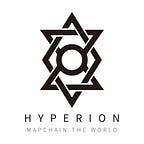Hyperion Weekly Quiz Report — PoH Consensus Mechanism
Dear Community,
Prior to the launch of Hyperion Mainnet later this year, we will present a weekly Q&A report series to further discuss the key decentralized map products and governance structures that boosts the overall Hyperion ecosystem, and clarify the confusions raised by our community members. We will cherry-pick the most popular quiz posts across social media channels.
This week, we’ll first discuss PoH consensus protocol according to the questions collected from our telegram and twitter users. If you have any questions regarding any of the products, economic model or governance structure, don’t hesitate to post to us via twitter, Facebook, telegram or email, you might see your questions listed in the article below next time!
Q1:
Hyperion is built on static structure and dynamic structure, why do you employ dual structures and use an organic hybrid consensus of PoW and PoS called PoH?
In simple terms, let’s think of PoH as a high-level organic combination of PoW and PoS. PoW provides a verifiable mechanism to incentivize a larger network of map services (the more verifiable works done, the higher the reward). While PoS provides an efficient paradigm for providing a fast and cheap consensus layer. That’s a simple static view of PoH and it is just 50% of PoH.
The other 50% lies in the dynamic structure of PoH. We have designed a total of 10 scaling cycles for Map3 nodes (the PoW layer) to scale out (for higher network capacity and more community participation) and thereafter trigger the Atlas (the PoS later) to scale up (higher staking volume). Scaling out and up will burn more HYN through our Token Burning Model and change the supply-demand dynamics of the tokens. The scaling cycle will happen every other few months to catalyze the growth of the ecosystem.
Q2:
Is PoH suitable for use as a general public chain or composite DAPP? How will PoH bring advantages to blockchain technology as a consensus mechanism?
We believe that there’s no best consensus mechanism, but only the best suitable one for your own project. POW and POS are both designed to accomplish the project’s mission & vision under a “trustless governance” with differed standards of rewards and penalty mechanism. In Hyperion’s case, PoH (Proof of Hybrid) aims to achieve the vision of one-stop location blockchain service with a hybrid POW*POS governance on two layers (Map3 * Atlas).
Since Hyperion is built based on a crowd-build, crowd-source, and crowd-govern model, the extent of decentralization best differentiates us from existing map giants such as Google Map, which relies on a centralized map production and control system. In this case, PoH hybrid mechanism is designed to ensure the sustainable contribution to both decentralized map data and map services, as well as map transactions by participants on two layers.
Q3:
What are the unique features of PoH?
The new PoH paradigm includes:
Static Structure: An innovative two-layer token staking mechanism. Token holders can participate in running Map3 nodes through micro-staking for service incentive, and then transitively (no extra tokens needed) Atlas nodes through re-staking for mining incentive.
Dynamic Structure: The Map3 network performs horizontal scaling overtime to incentive more Map3 nodes, more micro-staking participants and thus a more vibrant ecosystem.
Token Burning Model: token burning is embedded in the network scaling process to expedite the development of the ecosystem through changing the demand-supply dynamics.
Q4:
Most projects now use the Proof of Stake (PoS) algorithm because it is more up to date, why does the Ergo Hyperion(HYN) still use the PoH algorithm? What are the advantages of PoH over other algorithms?
Consensus protocol = membership protocol + block producing protocol. We devise a PoW * PoS protocol based on the specificity of our ecosystem.
Decentralization is based on the two essential elements, data & service. The amount of data and service contributed by blockchain participants determines the security and efficiency of the decentralized network.
Hyperion is a decentralized community with an open-participation model. Anyone can participate in it and earn their tokens. The Map3 PoW incentive distribution mechanism gives a clear guideline on how should our community operate its nodes.
The model gives some extra favors to those who could attract more services usages — for example, big location-based application developers who are already consuming a massive amount of map services every day. They could direct the map usage traffic on their platform to the Map3 network and that may help them win over the competition and get more tokens.
A consensus protocol concerns not just “How” but also “Whom”, i.e. the block producing committee membership problem. It is a definitive feature of a decentralized organization that it defines who maintains the infrastructure and gets rewards for doing so. PoW based mechanism will provably and fairly select those committee members. PoH is an organic hybrid of PoW and Pos, which combines the advantages of dual-mechanisms on Map3 and Atlas layer. You can find more about PoH on the ecoc white paper 2.0.
Next week we’ll share on economic model 2.0, stay tuned…
